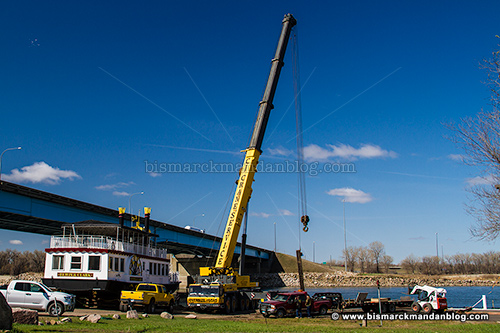
After its hull inspection and a winter spent safely out of the water and potential ice jams, the Lewis & Clark riverboat was ready to hop back into the Big Muddy. It’s been up on blocks since the end of last season, prompting questions from my little boys as to how it got there. Well, thanks to a tip from my friend Diana, I was able to take them out to observe last weekend. Even better from a little boy’s point of view: they use a huge crane.
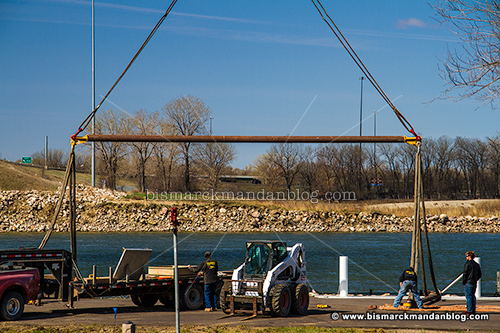
Since the boat lacks sufficient anchor points with which to attach crane hooks, it has to be cradled to be moved. That’s where this rig comes in. It provides a nice, wide configuration to which they can attach the necessary accoutrements for such a delicate job.
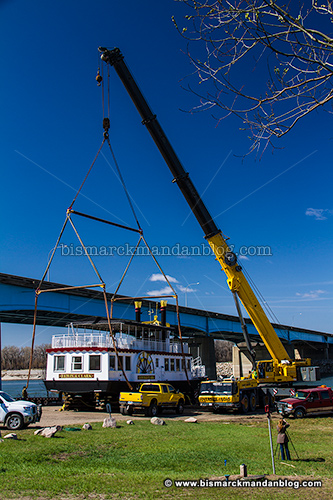
With the rig in place, it’s simply a matter of using very large straps beneath the hull to provide a cradle for the gentle lift.
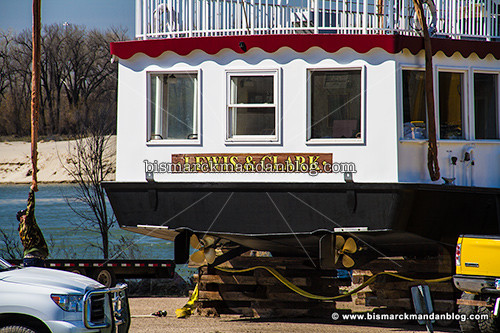
The tricky part: the propellers and rudders. If the rear strap would slip and hook on those parts, it could be disastrous. Proper placement is key.
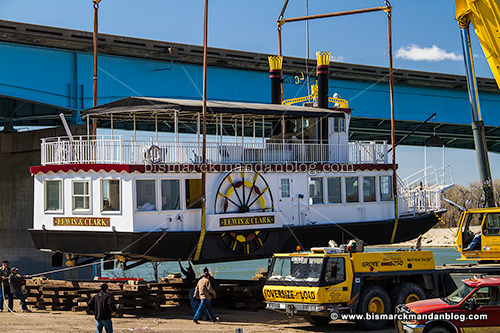
Once everything is snugged into place and checked as tension is applied, it’s time for the slow lift. I presume that the first rule of using a crane is to lift as slowly as possible and only as high as is necessary. Force equals mass times velocity, so getting a suspended load moving too quickly makes it much more dangerous.
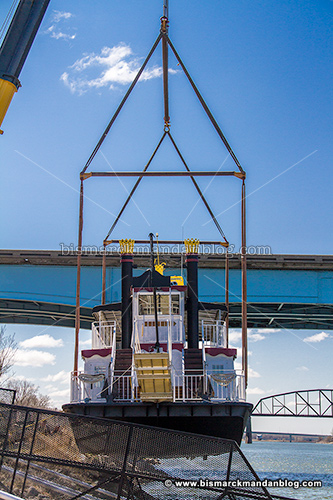
Slow and steady. The crane had a lot of counterweight attached to allow it to extend out into the river without taking a dip. As the riverboat slowly made its way out past the shore, crews with guide lines made sure it stayed straight. Lots of eyes were on the payload and communication yelled between the guys holding the anchor lines at each end to keep it straight.
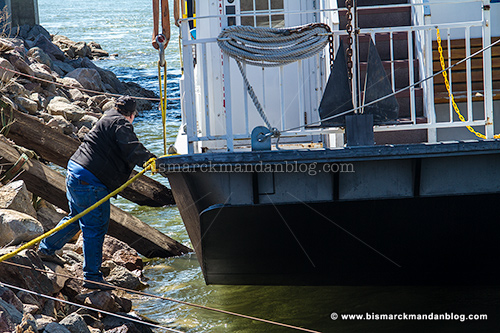
As it eased into the water, these rails kept it from nudging the rocks along the shore. They had been placed there for the lift to provide extra protection. As the waves began to lap against the bottom of the hull, it eased into the water safely along these wooden bumpers.
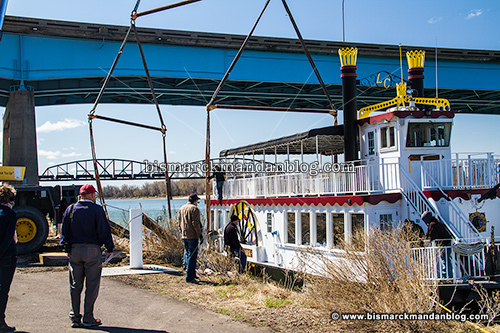
With the boat safely placed in the river and tension eased on the straps, it was simply a matter of letting the straps relax beneath the boat and slowly easing the rig downriver. Thankfully the straps did not get hung up on the props or rudders, or someone would have had to jump in and work ’em loose. It looks like the lift went without a hitch.
By this point it was too cold and windy for my little guys, so we headed home instead of watching the crane be dismantled. It’s always fun to see a big lift, though…even though it moves slowly, it’s a really neat spectacle to watch.
















